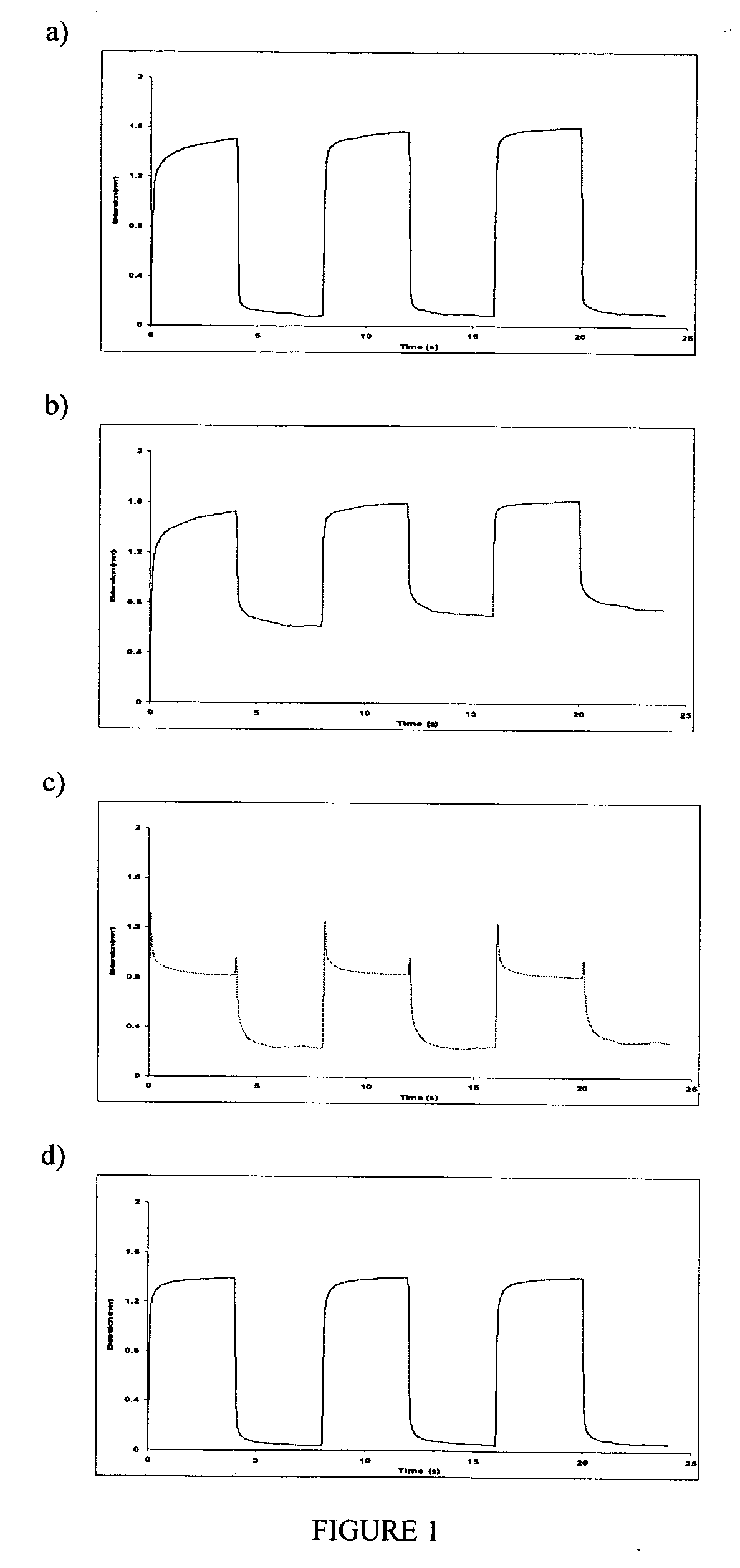Substrate having properties of mammalian skin
a technology of substrates and skin, applied in the field of substrates having the properties of mammalian skin, can solve the problems of raising reliability concerns, expensive and time-consuming tests, and subjective feedback of humans, and achieves cost-effectiveness, rapid and efficient product development, and accurate model of mammalian skin
- Summary
- Abstract
- Description
- Claims
- Application Information
AI Technical Summary
Benefits of technology
Problems solved by technology
Method used
Image
Examples
examples
[0087]Example 1 describes one process for making an example of a substrate as described herein that mimics the properties of skin on a human forearm.
[0088]Make a first negative imprint of keratinous tissue by applying a material1 capable of forming a cast, or mold, onto a human forearm. (To make imprints of other keratinous tissue, a negative imprint similarly may be made of another body part, for example, human skin on other parts of the body, lips, hair, etc.). When set, remove the cast and allow to dry for 3-7 min. Create a positive mold that resembles the body part in both form and texture by placing, for example, silicone or other suitable material2 in the negative mold. Remove the material from the negative mold to obtain the positive mold, and impress the positive mold into polyurethane or other suitable material to create a second negative mold. Remove the positive mold and allow the second negative mold to cure overnight. Optionally, the positive mold may be pressed into a ...
example 2
[0093]The following example describes a substrate suitable to mimic the skin on top of hard tissue, for example, of a thin layer of skin overlaying bone, for example, of the human shin or forehead.
Make the substrate as described in Example 1, wherein the first layer has an average thickness of about 100 micrometers to about 600 micrometers, the second layer comprises XP-574, the third layer has a hardness of from about 70 to about 80 on the Shore D scale, and the hardness of the substrate is about 52 to about 55 on the Shore OO scale. The second layer may have a thickness of about 0.15 cm, and the third layer a thickness of about 0.85 cm. One example of a suitable material for the third layer is F-132 hard polyurethane polymer from Rudolph Bros. and Co., Canal Winchester, Ohio 43110.
example 3
[0094]The following example describes a substrate suitable to mimic wet skin.
Make the substrate as described in Example 1, wherein the first layer has a thickness of about 1 micrometer or less, the second layer comprises XP-574, the third layer comprises PC-16, the second layer has a thickness of about 0.15 cm, and the third layer a thickness of about 0.85 cm. The resulting substrate will have a coefficient of friction similar to wet skin.
PUM
| Property | Measurement | Unit |
|---|---|---|
| Length | aaaaa | aaaaa |
| Length | aaaaa | aaaaa |
| Length | aaaaa | aaaaa |
Abstract
Description
Claims
Application Information
 Login to View More
Login to View More - R&D
- Intellectual Property
- Life Sciences
- Materials
- Tech Scout
- Unparalleled Data Quality
- Higher Quality Content
- 60% Fewer Hallucinations
Browse by: Latest US Patents, China's latest patents, Technical Efficacy Thesaurus, Application Domain, Technology Topic, Popular Technical Reports.
© 2025 PatSnap. All rights reserved.Legal|Privacy policy|Modern Slavery Act Transparency Statement|Sitemap|About US| Contact US: help@patsnap.com



